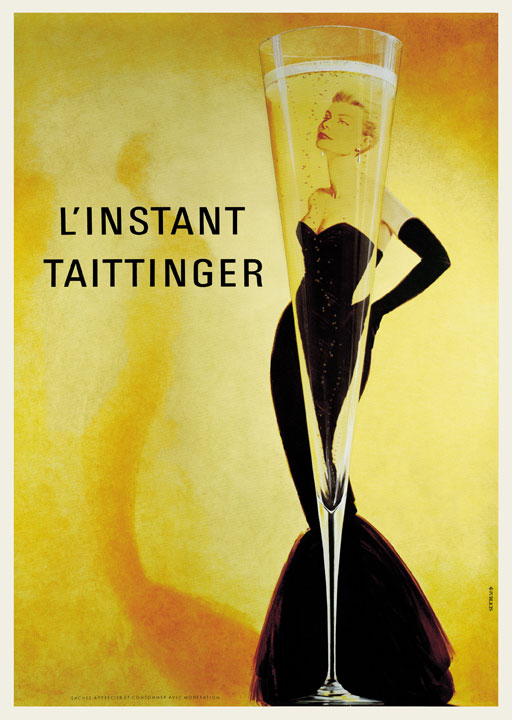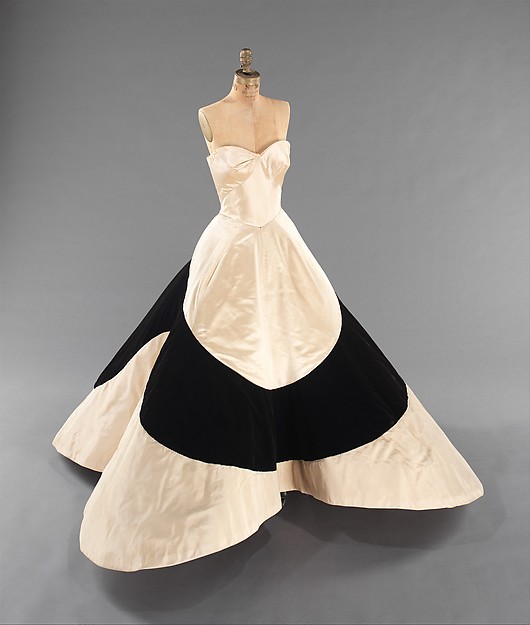CHAPTER 1
Fashion & Privilege
David Hume and Luxury Fashion
Why did Roger Vivier invent the stiletto heel? Why do bras costing 2000 Pounds Sterling exist? Why, despite the West’s democratic egalitarianism, does haute couture still thrive? Whig Thomism is a position within Catholic reflection on economic, social, and political life that is not appalled that such questions can even be posed. Tracey Rowland, a leading critic of Whig Thomism, isolates the core of the school: the conviction that there is, or ought to be, continuity between CST and the Scottish Enlightenment.[1]

There are a number of books with a title something like “How the Scots Invented the Modern World.” Scots the world-over no doubt think this is true, and, with a pinch of salt, there is truth to the claim. We live in a commercial culture rather than an aristocratic, military, or priestly culture, and Scottish thinkers were amongst the first to reflect on this fact; indeed, they helped make it a fact. The Scottish Enlightenment picks out a group of intellectuals, some of the very first rank, who flourished in eighteenth century Scotland. Lesser-known thinkers like Lord Kames and Francis Hutcheson set a framework of inquiry that flowered in the towering minds of Adam Smith, David Hume, and Thomas Reid. Though some might dispute the accuracy of Rowland’s definition, I like it: her proposition is a powerful intellectual formula for the engagement of moral theology with culture. Rowland, like MacIntrye, thinks Scottish thought[2] culminates in an American liberal economic and political order “really toxic” to faith.[3] There is a sense in which I agree with Rowland, though much hangs on what “liberal” means. If “liberal” means the humanitarianism of progressive democracy, then, as I show in EM and KA, Rowland is right: here, however, I want to argue that CST can adopt the Scottish school’s theory of commercial motivation — that what drives the economy is a desire for adornment, and that fashion, not money, “makes the world go round.” Eighteenth century Scottish thinkers argued that vanity is basic to business motivation.
2
This suggests that beauty and aesthetics rather than the good and ethics structure commercial societies,[4] like those of the West, and now much of the world. Can any self-respecting Thomist accept this? The idea that beauty underwrites ethics is certainly a respectable intellectual position with many supporting arguments. Consult Lord Shaftesbury, C. S. Pierce, some interpreters of Aristotle,[5] and Scheler’s value ethics, to name a few exponents. The disgust reaction, which Kolnai regards as a central moral disvalue, is aesthetic in character.[6] If beauty is basic to moral order,[7] vanity may well be as crucial as the Scots think.
3
And effective: theologians critical of Whig Thomism are skeptical of, amongst other things, the role of markets: invariably this skepticism boils down to the question of the nature of property and especially whether corporations have a moral obligation beyond what they owe their investors. This is indeed a crucial question, and the book addresses it extensively, but a Catholic answer cannot reduce to that offered by Corporate Social Responsibility theory,[8] which tends typically — I discuss Prada’s interesting use of the term in Chapter 5 — to insist that private property is, at heart, as Rawls puts it, a “common asset.”[9] The Whig idea is quite different. Vanity and luxury, says Daniel Defoe, “feed trade and consequently the poor.”[10] Volume sales are a hallmark of capitalism — the idea makes both moguls (Bill Gates and Sam Walton, say) and the (near) worldwide increase in calorie consumption possible. However, volume sales occur on the back of luxury, privilege, refinement, exclusivity, and fashion: “these volume sales take place by the grace of luxury.”[11]

Elaborated more in the following chapter, the most recent work on poverty and development does seem to confirm the Whig idea.[12]
Thomists must be wary. Montesquieu cites evidence of a link between vanity and abortion.[13] Abortion is an abandonment of the living and Scheler identifies such abandonment as a structural feature of vanity. He was much taken with Sombart’s thesis that capitalism is, most essentially, a system of business organization in service of luxury. In fact, Sombart argues that capitalism is an erotics: luxury is the expression of man’s fascination with feminine style and sensibility.[14] Hume also notes the centrality of gallantry in commercial society (H, 131-33). Vanity might bring people together but, argues Scheler, vanity trips the abandonment of the self. Ever sensitive to how he is received by others, the vain man lives out a fashionable social self, leaving his personal, individual self, untended. There is a reversal of value here, one that defines commercial civilisation, according to Scheler. The high value of personal discrimination is forsaken for lower generic values of assimilation (NS, 39-44). This reversal is the hallmark of a ressentiment civilization.

5
According to Sombart, up until the eighteenth century, luxury was tied to the court and aristocrats set styles;[15] since then, adds Scheler, commercial society has slipped into a utility-driven ethos. Initially a supporter of World War I, Scheler quickly became disillusioned and came to the view that it was a capitalist war: life was destroyed unrelentingly but government made no demands on people’s property. It was a war to protect property and markets, he concluded: low values forced the sacrifice of bearers of high values, therefore.[16] Victim to ressentiment, the West is a declining civilization under capitalism (NS, 103-07), according to Scheler’s lights.

6
Does vanity entail abandonment and reversal? Chapter 4 argues Smith defends the ethos of commercial society on account of aesthetic, not utility, values. Here, I argue that Aquinas’s treatment of vanity shows that abandonment and reversal are not strict implications of vanity and, therefore, continuity between Thomas and Hume exists. I do not dispute the basic thrust of Scheler’s ethics — inversion of value is destructive of environments and persons — but the Church can work with fashion, beauty, design, and art, for the reform of commercial society, to make it serve persons; refinements in adornment need not be “toxic” to faith.
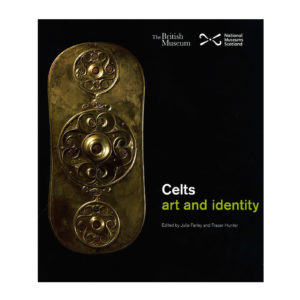
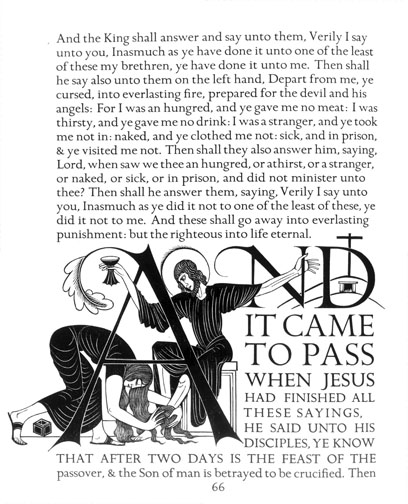
7
Hume thinks vanity a part of human nature (H, 259). Archeological digs of Neanderthal dwellings show no convincing evidence of jewellry or adornment. The earliest human settlements have an abundance of such evidence. Further proof of Hume’s claim might be the historical record that shows that sumptuary laws are always fragile.[17] Thus, manufacture generates what is “necessary and ornamental to human life” (H, 256)[18] and fostering opulence in the private domain builds the greatness of the state (H, 255). The state contributes security to trade and trade contributes labour to the state; that is, trade educes from a population innovation and technological prowess and these qualities become a resource for the state in times of need (H, 262). Trade educes work and refinement from the people because luxury, adornment, and opulence provoke the desire for vanity. People covet beauty.
8
Cities flourish and novelty ranks high as people come together “to show their wit or their breeding; their taste in conversation or living, in clothes or furniture” (H, 271). Vanity and the quest for fashion objects underwrites the industry, knowledge, and benevolence[19] of commercial civilisation.[20]


9
Hume’s 1742 Essay “Of Refinement in the Arts” starts with three provocations typical of Hume. The first might even be thought deceitful. The essay begins: “Luxury is a word of an uncertain signification.” The eyes of every reader in 1742 must have popped. Educated in Latin from a young age, Hume, like his readers, was well aware that in Latin luxuria identified the deadly sin of lust and also knew that the English word ‘lechery’ stemmed from luxuria.[21] Hume is well aware of this, of course, because the whole point of his essay is to overturn the long-standing suspicion of luxury dating back to Plato. Later in the essay he notes that the Roman moralists were of one mind in thinking that luxury weakened Rome but about this, he argues, they are mistaken: Rome fell because of its slavery and lust for empire. His more immediate target, however, is the church, those whom he calls the “severe moralists.” This explains the super image that starts the essay: the monk who makes a pact with his eyes never to look in the direction of the “noble prospect” outside his cell’s window. The monk turns from beauty because ensnared in the “frenzies of enthusiasm.” It is a damning charge: Catholicism has an antipathy to the beautiful. Hume was well-travelled and knew this was absurd, though, sadly, it is undeniable it captures the ethos of a good many earnest Christians today.
10
It is the image immediately following that of the monk that bears within it the most power though. The “severe moralists” claim there is such a thing as “the crime of drinking Champagne or Burgundy, preferably to small beer or porter” (H, 269). This crime is frequently invoked: Who has not heard some claim that there is something obscene about people who glory in their riches when all around us there is poverty and suffering?[22] Hume’s argument, of course, is that by drinking champagne, and the aspirations of billions to do so, the whole world is invigorated, and poverty alleviated. Hume turns the argument around on the “severe moralists” and probes them wondering whether they really do hope to see poverty mitigated.

11
There is no industry more invested in the idea of champagne, or at least the champagne flute, than the fashion industry — think only of the famous Grace Kelly advertisement poster for Taittinger Champagne, where the flute traces her in a ball gown.
Super models today — and I will visit the issue of the plus size model[23] when discussing Smith’s account of beauty in a couple of blog posts — are veritable walking champagne flutes. Why this connection? It does appear that clothing looks best on people who resemble a champagne flute than a pot of beer, but is this simply a product of culture? Kolnai points out that all languages identify height with positives: think of the big wave the surfer through skill and courage masters; rule of law is linked to the idea of judges handing down verdicts; education is ranked lower school and up; haute couture, and so on.[24] The champagne flute stands tall and it also has something evidently geometrical about it. Adornments are, says Hume, refinements of the arts and sciences, and Western fashion[25] with its axiomatic pinched waist conveys this reliance on geometry. Couturier Charles James famously made this reliance glaring, and utterly beautiful.[26]
12
Hermès experimented (and it proved costly) with making silk saris. They were gorgeous creations yet they barely sold any.[27] Why is it that Indian women are increasingly wearing Western style clothing?[28] Oddly, despite all the young who study abroad and the constant emphasis at colleges on global experience, young Western women do not wear saris. Why is the movement of fashion only in one direction, from India towards the West? The geometry of the pinched waist, which creates negative space, lightens anyone’s frame, but the sari, as a continuous swath of fabric, does not. Western fashion accomplishes this and, unsurprisingly, as a population become themselves more versed in the arts and sciences, so they sport them in their adornments.
13
Implicit in Hume’s image is the aristocratic and the common. Champagne connotes exclusivity and privilege, the pot of beer, the easily accessible.[29] Though Fast Fashion,[30] the mass production of clothing, is the bread and butter of the fashion business, the driver is haute couture. Though many prophesied its demise after 2008, the reverse has happened.[31] Dolce & Gabbana have actually closed down their ready-to-wear to focus solely on handmade clothing,[32]and just added a bespoke men’s line to complement their women’s business Alta Moda. Across the range of design objects, from cookers to knives,[33] to guns, [34] exclusivity is found and is not to be toyed with (a point discussed later in Chapter 5.)
14
Does moral theology give a positive account of vanity? Thomas’s De malo (1272) offers the classic analysis of the topic and supports my basic thesis: vanity can have a licit role in civilization. Thomas believes we are comparative creatures — compared to God in the first place, ontologically, and to other persons, socially. He grants that pride — and vanity, like all the deadly sins, is a function of pride — is a structure of the human spirit.
15
John Paul II’s Laborem Exercens and Centesimus Annus are superb engagements with the world of business and commercial life. In these texts, work is identified as “the key to the social question” (Laborem Exercens, para. 3) and for the same reasons that Whigs like Hume and Burke championed property (Centesimus Annus, para. 43). Work builds dignity (Laborem Exercens, para. 9), argues John Paul II. It “confirms” man’s dominion of the world when, and such is the onus of ethical business practice, work engages the intellect, requires self-management, and tends to human flourishing. That is, work builds dignity when it addresses man’s basic powers: intellect, will, and appetite. And so of work, John Paul II writes: “And this mark [work] decides its [the human person’s] interior characteristics; in a sense it constitutes its very nature” (Laborem Exercens, Greeting; cf. Centesimus Annus, para. 6). But what provokes work?

16
There are hints that John Paul II recognizes the role of vanity. There are intriguing passages where the question of vanity surfaces in Centesimus Annus. He notes that segments of populations within thriving, globalized countries sometimes struggle for the opportunity to actualize the resources they have. The condition of the marginalized in this sense is hard indeed: they are goaded into cities, abandoning their traditional ways, “allured by the dazzle of an opulence which is beyond their reach” (para. 33). The vocabulary is Hume’s and his underlying philosophy is not, I think, straightforwardly dismissed. What is regretted is less the role of vanity, opulence, and refinement, and more the suffering of people unable to actualize resources to adequately meet the dynamics of commerce. There are crucial issues here, and I discuss them in the next chapter in light of Pope Francis. CST insists that only some of the Whig legacy is acceptable. This is right: a Tory corrective is needed. Refusing to make an idol of the market, John Paul II nonetheless praises its mechanisms: “above all they give central place to the person’s desires and preferences, which, in a contract, meet the desires and preferences of another person” (para. 40). There is a legitimate place for self-interest (para. 25) and the person is, by virtue of fundamental inclinations and powers, entrepreneurial (para. 32). Consumerism can be a profound problem (para. 36) but only when a culture has (echoes of Scheler) reversed the objective hierarchy of value (para. 28, 41, 47).
17
Thomas’s De malo is divided in two: the first part concerns the structure of action,[35] the second, the question of motivation. In De malo. q. 8, 2, Aquinas writes:
And one of the things that human beings naturally desire is excellence. For it is natural for both human beings and everything to seek in desired goods the perfection that consists of a certain excellence. Therefore, the will will indeed be morally right and belong to loftiness of spirit if it seeks excellence in accord with the rule of reason informed by God.
18
Pride, understood as “loftiness of spirit,” is natural as humans seek excellence: excellence is specified by reason, and ultimately God. In the paragraph preceding, Thomas tells us that, “every good naturally desired is a likeness of God’s goodness.” God’s goodness is ecstatic: for the good, as Thomas frequently notes in the words of Pseudo-Dionysius, diffusivum sui est. This generosity is always ennobling, aiming, as Scheler would put it, at enhancement of the value of the beloved.
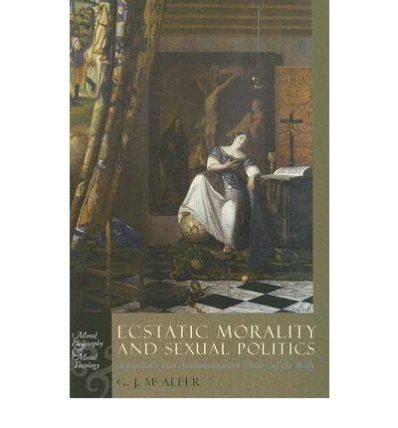
19
These themes are present in Thomas’s discussion of vanity. In the objections, Thomas cites various Roman authors who, unsurprisingly, dwell on the naturalness of vanity. He also cites the argument that since humans want to know the truth they also want the truth about themselves known (DM, q. 9, a. 1, obj. 3). Thomas promptly dispatches this argument: to know the truth is to perfect the intellect and humans naturally desire to perfect their appetites: “But to desire that others know one’s goodness is not a desire for one’s own perfection.” Here, Thomas appears to set his face against vanity, as the Scots understood it: a regard for how one is viewed in the eyes of the spectator. It is the rest of Thomas’s argument that intrigues though.
20
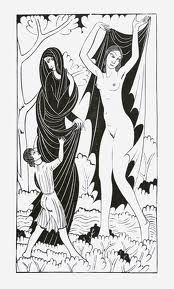
In the fourth chapter, I discuss Smith’s ethics and there is no doubt he believes our grasp of this Thomistic point is, in practice, slim. However, the emphasis on aesthetics found in the Scots is also found in nuptial theology: the claim that marriage is a privileged access to how best to understand Christian metaphysics and morals. Przywara is especially good on this,[36] and nuptial theology clearly relies on certain aesthetic ideals of comeliness, what is becoming and lovely about the beloved.[37] Pope Francis has, like no pope before him, placed the consideration of beauty at the centre of the Church’s social reflections. An opening image in Laudato Si, a text widely believed to be hyper critical of commerce, is especially interesting: Saint Francis requested that a part of the friary garden be left untended as a place for wildflowers to take root (LS, para. 12). Working by analogy, one can have insight into God’s beauty from the beauty of the wildflowers. The image is odd. The wildflowers are only put into relief by the art of the cultivated garden. Wild beauty is revealed in the contrast with artifice. Design and labour in the friary garden open a space for the revelation of another variety of beauty. Beautiful clothes succeed most when fine tailoring is complemented by graceful movement and graciousness. Nature complemented with grace.

21
Vanity, with caution, is tied to human development: “It is therefore necessary to create lifestyles in which the quest for truth, beauty, goodness and communion with others for the sake of common growth are the factors which determine consumer choices, savings and investments” (Centesimus Annus, para. 36). Much hinges on the right relationship between beauty and goodness. “Hence Ambrose says (De Offic. i, 18): “Beauty of conduct consists in becoming behavior towards others, according to their sex and person,” and this regards the first. As to the second, he adds: “This is the best way to order our behavior, this is the polish becoming to every action.” This quote is in the body of Thomas’s answer to the question whether virtue is applicable to the exterior movement of the body. Clothes and style (ornatus), Thomas says, ought to conform to the virtues of affability and truthfulness. Care ought to be taken with outward appearance: “It is moreover from our outward movements that other men form their judgment about us, according to Sirach 19:26, “A man is known by his look, and a wise man, when thou meetest him, is known by his countenance” (ST II-II, q. 168, a. 1, ad. 3). Thomas puts an emphasis on style reflecting goodness of heart: “And clarity implies some evidence that makes something apparent and manifest in its splendor, and so glory implies a manifestation of someone’s goodness” (DM, q. 9, a. 1).
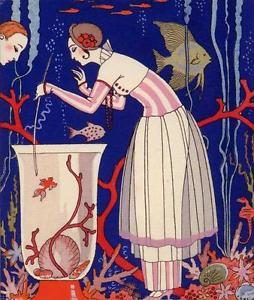

22
A sign of rapprochement with the Scots is Thomas’s use of Ambrose as an authority: glory is “clear recognition accompanied by praise” (DM, q. 9, a. 1). Thomas argues that vanity, underwritten by the right norms, is good. These norms are: truth, the common good, and care of the self. To desire that one is known by others to be good can be a laudable desire: if manifesting one’s goodness redounds to the glory of God, if it works for the good of one’s neighbor, and if one is strengthened in virtue and encouraged to persevere. Indeed, preempting the language of the Scots, Thomas argues that manifesting glory helps neighbours, “who, perceiving one’s goodness, are drawn to imitate it” (DM, q. 9, a. 1).
23
[1] T. Rowland, “Benedict XVI, Thomism, and Liberal Culture.” I cite the second part of this interesting interview available at Zenit, July 25, 2005.
[2] The Scottish Enlightenment was a British phenomenon in some way. Smith and Hume were English in sensibility to a significant degree and Hutcheson, Smith’s teacher, was Northern Irish. Burke was something of a fellow-traveller, and he was Anglo-Irish. Please see my essay, “Business and Dignity: An Application of Edmund Burke’s Analysis of America,” Jerusalem, Athens, and Rome: Essays in Honor of James V. Schall (St. Augustine’s Press, 2013).
[3] For an interesting account as to why the relationship between Catholicism and American popular culture might not be hostile, please see Steve Sherwood, “American Pop Frankenstein? Andy Warhol, Iconic Experience and the Advent of the Pop Society.”
[4] Please see my discussion, “Business Ethics and Catholic Social Thought,” Nova et Vetera, Vol. 4:1 (2006), pp. 17-27.
[5] See the extremely interesting essay by Frank Knight, “The Ethics of Competition,” The Quarterly Journal of Economics. Vol. 37 (1923), pp. 579-624.
[6] A. Kolnai, Disgust (Chicago: Open Court, 2004).
[7] A. Kolnai, “Aesthetic and Moral Experience,” Ethics, Value, and Reality (New Brunswick, NJ: Transaction, 2008), pp. 187-210.
[8] For Pope Benedict’s caution about CSR, see Caritas in Veritate, para. 45.
[9] See the discussion of Rawls in John Kekes, The Illusions of Egalitarianism (Ithaca, NY: Cornell University Press, 2003), Chapter 4.
[10] Defoe as quoted by Wener Sombart, Luxury and Capitalism, p. 115.
[11] W. Sombart, Luxury and Capitalism, p. 147.
[12] See the Hans Gosling Video. Amongst an enormous literature, see: “Poverty’s Long Farewell,” The Economist, February 28, 2015; Justin Lahart et al. “New Limits to Growth Revive Malthusian Fears,” WSJ (March 24, 2008); Paul Beckett et al. “India’s Surging Economy Lifts Hopes and Ambitions,” WSJ (November 28, 2007); and the book review by Fr. R. de Souza, “Paul Collier: The Bottom Billion: Why the Poorest Countries Are Failing and What Can Be Done about It,” Religion and Liberty, Vol. 17:4 (Fall 2007), pp. 4-5.
[13] Please see EM, p. 166n48.
[14] Cf. Przywara’s discussion of the Greek idea of cosmos (AE, pp. 489-90).
[15] W. Sombart, Luxury and Capitalism (Ann Arbor, MI: University of Michigan Press, 1967), pp. 86, 113.
[16] M. Scheler, Ressentiment (Milwaukee, WI: Marquette University Press, 2003), p. 144, n. 25.
[17] “Why Sumptuary Laws, Despite a Rich History, Never Lasted Very Long” (Cynthia Crossen).
[18] On the Greek idea of the cosmos as ornamental, see AE, pp. 489-90.
[19] Sorel concedes Hume’s point, arguing that the role of violence in anarchism is to throw benevolence back in the faces of the bourgeoisie (G. Sorel, Reflections on Violence [Cambridge University Press, 2004], p. 77-8).
[20] D. Hume, A Treatise of Human Nature (Oxford: Oxford University Press, 1985), p. 340-41. See also Hume on the moral life as an embellishment and adornment: Enquires Concerning Human Understanding and Concerning the Principles of Morals (Oxford: Oxford University Press, 1978), p. 225.
[21] P. Seabright, In the Company of Strangers: A Natural History of Economic Life (Princeton, 2004), p. 76.
[22] Amongst philosophers, Peter Singer is a real scold.
[23] “In Argentine Province, Fashion Police Say Small Isn’t Beautiful” (Matt Moffett).
[24] See Kolnai’s brilliant essay, “On the Concept of Hierarchy,” EVR, pp.
[25] “Every Scarf Has a Story,” (Christina Binkley).
[26] “Where Elegance Meets Eros,” (Robert Smith) NYT, Friday, May 9, 2014; cf. “Intimidating Genius,” (Laura Jacobs).
[27] “Hermes Sari Flops in Delhi,” Sunday Guardian, October 23, 2011.
[28] “India’s New Beauty Ideal Is a Wisp of Its Former Self” (Margot Cohen).
[29] Many luxury companies have a conscious strategy of keeping their products in short supply: see “Pricey Bags Reaching Their Limit” (Suzanne Kapner, WSJ, Thurs March 5, 2015).
[30] “Do Fashion Trends Still Exist?” (Kate Abn).
[31] “How Haute Couture Went International” (BOF: Robin Mellery-Pratt).
[32] “Fashion’s Most Exclusive Show” (Christina Binkley).
[33] “Let Us Now Praise… Pricey Stoves?” (Josh Ozersky).
[34] Consider some of the adverts for Beretta guns (Fig. ).
[35] For the importance of Thomas’s action theory to issues in business ethics, please see my chapter on blood diamonds in KA.
[36] Amongst many places in his work, see AE, pp. 480-500.
[37] On erotics in Pope Benedict’s thinking, please see my, “Pleasure: A Reflection on Deus Caritas Est,” Nova et Vetera, Vol. 5:2 (2007), pp. 315-24.


